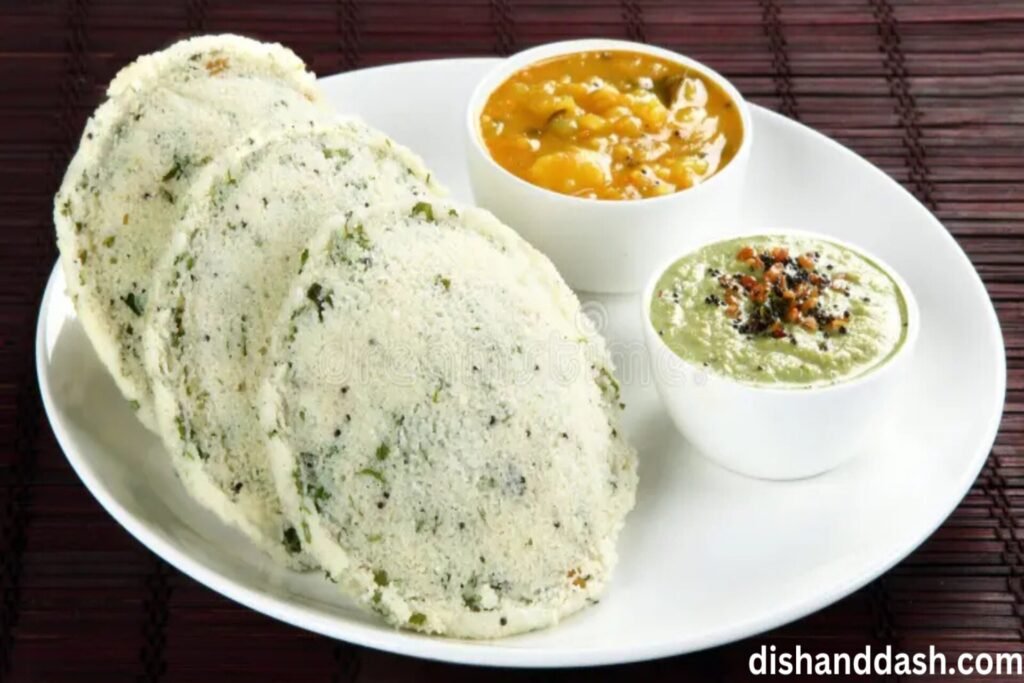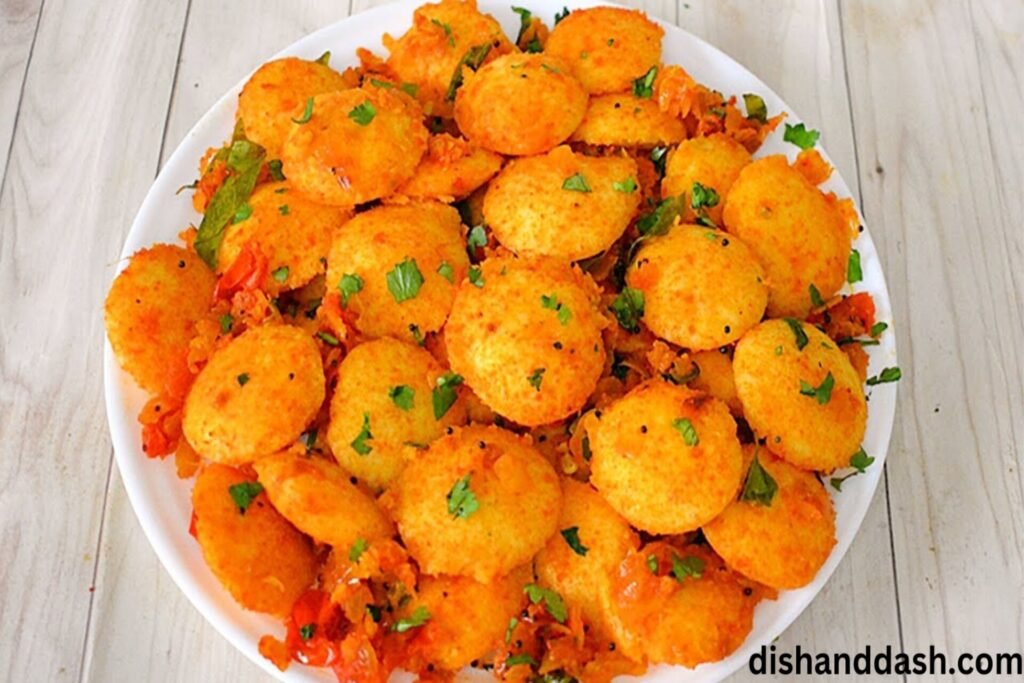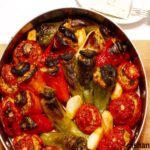Idli is a small, spongy steamed rice cake and it is a very popular breakfast in South India. This is a light and healthful preparation of the vegetable and very often it is eaten with coconut chutney and sambar. Here are details for the preparation of soft and fluffy idlis at home with a simple method.

Table of Contents
What is Idli?
Idli is a steamed cake that is made using rice and black gram, this savory product was invented in India. Conventional for a long time, it is produced utilizing fermented rice and lentils which makes it soft and does not cause problems with digestion; it has a downy, porous structure. Being steamed the idlis do not contain oil and are therefore a perfect healthy breakfast food.
Why Make Idlis at Home?
Preparation of iddlis from rice and urad dal may appear to be a tedious exercise, but it’s easier and yields much better ready-made’ idlis than what is available in the local stores. Besides, when making batter at home, people have an opportunity to control what kind of additives and seasonings to include in the dish.

| Ingredient | Quantity | Description |
|---|---|---|
| Parboiled Rice | 2 cups | Also known as iddli rice |
| Urad Dal (Black Gram) | 1 cup | Split and husked, for the batter |
| Fenugreek Seeds | ½ teaspoon | Helps with fermentation |
| Salt | As needed | Adds taste after fermentation |
| Water | As needed | For soaking, grinding, and steaming |
Equipment Needed
- Iddli Stand or Moulds: Essential for steaming.
- Large Mixing Bowls: For soaking rice and dal.
- Blender/Grinder: To make a smooth batter.
- Steamer or Pressure Cooker: To steam the iddlis.
How to Make Idli Batter
Step 1: Soak the Ingredients
- Rinse and Soak Rice: Wash the parboiled rice well and leave it to soak in water for some 4–6 hours respectively.
- Rinse and Soak Dal: Wash the urad dal and methi seeds well in water and soak for 4-6 hours.
Tip: Different customers vary their times and methods of soaking the ingredients to enable the preparation of softer iddlis.

Step 2: Grind the Batter
- Grind Urad Dal: The soaked dal was poured out and ground to a fine and light paste using a little water at a time. The batter should not be dense in any way, it should be fluffy.
- Grind Rice: Likewise, strain the rice and blend it; the rice mash should be rather coarse anyway. The rice batter should be slightly coarse so that when cooked the grains of rice do not become over-merged.
- Combine and Mix: Take both the batters in a large bowl and mix it gently then finally, cover the bowl loosely.
Step 3: Ferment the Batter
- Allow the Batter to Ferment: Transfer the batter to a warm temperature for 8- 12 hours. The batter does turn a bit more alive and slightly sour due to the fermentation process that makes this batter rise.
- Add Salt: Following fermentation add salt and mix gently avoiding collapsing the formed air pockets.
Note: The batter should be thick and should still pour easily, the surface of the batter must be facetted with small bubbles.
Tips for Fermenting Idli Batter
- Optimal Temperature: The optimal condition for fermentation is 25 – 32°C (77 – 90°F). Where the climate is cold, it could be necessary to warm the batter on the heater or use a warm towel.
- Don’t Over-Mix: Do not mix or stir the batter after fermentation and before steaming the iddlis as the batter may become compact, and heavy.
- Use Quality Ingredients: Good quality urad dal and rice used for fermenting the batter give soft and fluffy iddlis in turn.
How to Steam Idlis
Step 1: Prepare the Steamer
- Add Water: Open the cap of the steamer or pressure cooker pour a couple of cups of water into it, and then heat it.
- Grease the Moulds: To de-stick the iddli molds you can lightly grease them with oil.

Step 2: Pour Batter into Moulds
- Scoop and Pour: Spoon the fermented batter very lightly into each iddli mold so that it should be only 3/4 full for the batter to rise.
Step 3: Steam the Idlis
- Steam for 10–15 Minutes: After that, transfer the filled iddli stand into the steamer, cover, and steam for 10-15 minutes. To check, put a toothpick; if it comes out without any batter, then your iddlis are done.
- Cool Slightly: Allow the iddlis to steam for a minute or two, and then unzip the styro and remove the iddlis.
Pro Tip: Do not for too long as this will make iddlis tough.
Serving Suggestions
Serve your soft, fluffy idlis with a variety of accompaniments:
- Coconut Chutney: A sweetish, white, smooth gravy akin to that prepared by grinding fresh coconut with a little water.
- Sambar: A sourish hot thick soup prepared with lentils and vegetables.
- Tomato Chutney: Gives a little sour to the meal.
- Chili Powder (Idli Podi): This spicy powder is known as “gunpowder,” it gives a sort of explosion of taste when mixed with some amount of oil.
Conclusion
It takes some work to make idli from scratch, but then nothing can beat the taste and satisfaction! You can make these soft, pillowy rice cakes using a few ingredients and a little time at home. If it is about a weekend breakfast or a healthy breakfast, you are guaranteed that iddlis will be appreciated. Happy cooking!
FAQs
How long should I ferment the batter?
Fermentation typically takes between 8–12 hours, depending on the room temperature. In colder climates, it may take a bit longer.
Why are my iddlis hard?
Hard idlis can result from under-fermented batter, over-steaming, or a dense batter. Ensure your batter is airy and has risen well.
Can I use store-bought iddli batter?
Yes, but homemade batter yields fresher and fluffier iddlis. Store-bought batter may lack the authentic taste and texture.
How should I store leftover batter?
You can refrigerate the batter for up to 3–4 days. Be sure to mix it well before making iddlis each time, as some water might separate on top.
Can I make idlis without an iddli stand?
Yes! You can use small bowls or ramekins and steam them in a large pot. The texture may vary slightly, but they’ll still taste delicious.










